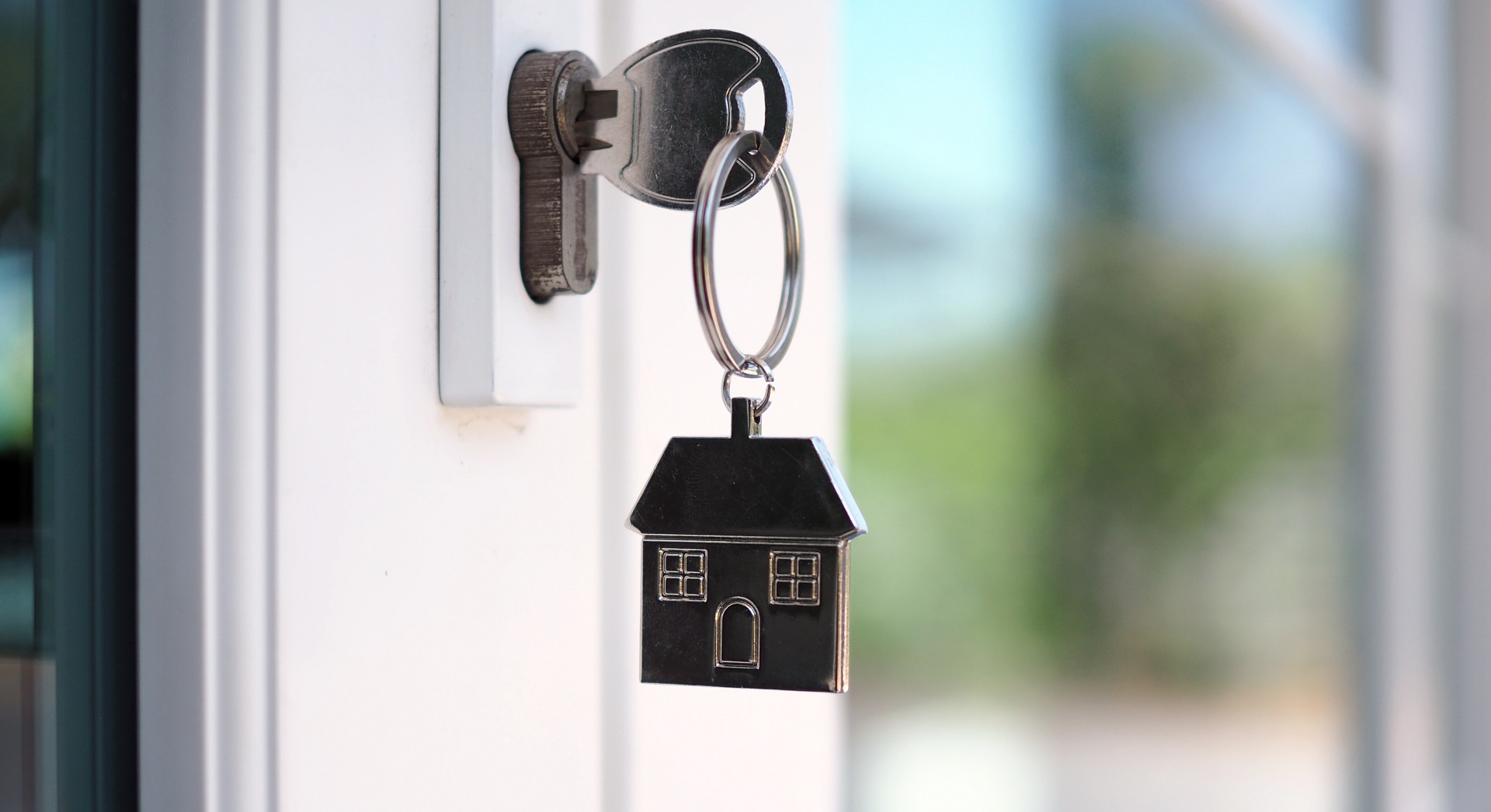The Real Estate Market: 22 VS 21

Where is the market headed?
Much has been written and pontificated about regarding the real estate market and where it is headed over the last year. Many projected with higher interest rates that home prices would retreat rapidly, and sales volume would tumble.
Others have speculated that the still tight inventory and lack of new home production would keep prices relatively high despite interest rates.
Who has gotten it right so far? Let’s take a look at our local market to try to make sense of the actual results as we compare the year-to-date numbers through November of 2022 versus November of 2021.
First off and still a bit surprising, we find that the median sale price has increased 9.04% year over year despite the higher interest rates buyers are facing. The median sale price for November of 2022 was $450,000 versus 439,900 in November of 2021. The tight inventory argument is probably winning the day as we see prices move even higher despite the significant increase in home mortgage rates.
Conversely, we notice that homes are selling on average in 3.03 months in November of 2022 versus 1.46 months in November of 2021. Generally speaking, three months is considered a fairly balanced market so one could argue, the tables have tipped to Buyers but not by much.
Many others have projected that the number of homes on the market would skyrocket if interest rates doubled which they have. We do find that the number of homes listed has increased from 595 in November of 2021 to 1103 in November of 2022 which is an increase of about 85%. It is worth noting however, 2021 was an extraordinary year in many respects for home sales. To illustrate the point, we look back at 2019, the period before the pandemic and we find that the number of homes listed was about equal to what we find today in 2022.
The higher interest rates have certainly changed the equation but the prognosticators that predicted a market crash seem to have missed the point about inventory supply simply not meeting demand even in a higher interest rate environment.
The inventory of listed homes has stayed relatively constant at around 1,100 homes for the last six months or so. We are not experiencing a dramatic increase in the number of homes listed month over month. In fact, new listings are down from 299 in November of 2022 compared to 340 new listings in November of 2021.
For new homes listed in November of 2022, we find the new list prices are up an average of 14.33% over November of 2021.
The question many folks have on their mind is, do I sell now? Do I buy now? Since prices are still relatively high, it makes sense for a seller to place his or her home on the market today. Prices could drop in 2023 if interest rates continue to rise or we are faced with a recession that slows everything down.
For Buyers, you have better choices today, but you could argue that waiting may result in lower prices down the road. However, if rates continue to rise you could be in a more difficult position. If the economy recovers and rates start coming down, prices will likely increase again rapidly. If you buy today and interest rates come down in the near future, you can always refinance and take advantage of the lower rates. If you can buy, and you find the right home, it seems like a good time to pull the trigger.
Trying to project where the market is headed is a tough call for even the most experienced in the real estate market as evidenced by the many miscalculations by some experts. Homeowners would be well advised to review their personal situation and meet with a qualified advisor to help make that very important decision based on their own circumstances.
Nick Malouff is the CEO and co-owner of Better Homes and Gardens Real Estate BloomTree Realty with offices in Prescott, Prescott Valley, and Cottonwood . To reach Nick or a highly qualified agent, please call 928-925-2023
Is it Time to Sell Your Business?

Thinking About Selling Your Business?
The time has finally come and you’re ready to sell your business. Planning for the sale of a small business may seem daunting. Perhaps you’re not sure where to begin or how to go about selling a business. To make the process as easy and profitable as possible, you’ll want to start planning early. Having time on your side can really pay off when selling a business. Whether you’re ready to retire or just move on to a new venture, here are a few important steps to keep in mind.
How to sell your business: key steps before the sale
Selling a business requires a lot of planning. As you begin the process, it’s important to focus on the step you’re in and the long-term objective. Otherwise, you may end up making short-term decisions that go against your ultimate plan. Here’s an overview of the process and post-sale considerations.
Get organized and know your numbers
The first step is to get your business financials in order. Clean up your books, prepare financial statements, projections, and compile key metrics for your industry. Understand the numbers. What is the financial position of the business? Outstanding liabilities? Relative growth in gross sales and net income? Number of customers and relative size? Alignment with your forward projections? You must be able to answer and justify the question; why would a Buyer want to buy this business?
Again, this is why it’s best to start as early as possible, so you have time to make adjustments. Perhaps you use cash to refinance, pay down debt, or cash out minority shareholders. Even if you don’t need to make any substantive changes, messy or incomplete books can kill the deal before it even gets started.
Gather your team of advisors
When selling a business, having a team of trusted advisors around you is crucial. Here’s why: chances are you haven’t sold a business before and likely won’t again. We don’t know what we don’t know…and you only have one shot to get this right.
In planning for the sale, get your team of business and personal advisors in place ahead of time. Your business advisory team may consist of a business broker/investment banker, valuation expert, accountant, tax advisor, and transaction/M&A attorney. On the personal side, your financial advisor, estate planning attorney, and CPA/tax advisor should be involved throughout the process.
There’s a lot of complexity to consider: structure of the deal, ways to retain key employees, tax planning, cash flow planning post-close, etc., so it’s very important to work with a team of specialists that can help you navigate your options. Many sellers of a business will carry a portion of the sale via a promissory note to help the buyer finance the purchase. Are you willing and able to do so?
What’s your business worth?
Understand the real-world value of your business in the current market by working with a valuation expert, business broker, or investment banker. When wondering how to sell your business, ask what buyers would be willing to pay today? There are general rules of thumb and industry standards that can give you a general idea of value but every business is unique and there are many factors that must be considered when determining real value. A good advisor can help you strengthen the components of your business that will add to its ultimate sale value.
Define your goals and financial needs
Before going too far down the path of exploring all the ways to sell your business, first consider your goals for the transaction. Do you want to sell 100% of the company at closing and walk away with the cash? Do you want to pass the business to family members or employees? Are you willing to keep working for 3-5 years after selling all or a portion of the business? How important is it that the brand continue? What are your cash needs?
There are many ways to sell your business and it is important to have a creative team to help you structure the transaction. But there’s no sense in spending time on options that don’t align with your objectives or financial needs. So before getting enmeshed in a complex deal structure and tempting tax-minimization strategies, take stock of your wants and needs.
As a business owner, your focus has been on running and growing the company. When selling your business, it’s imperative to take steps to plan for your personal financial future and to utilize the right expertise to help you ensure the highest value for your business.
Nick Malouff, CEO and Owner BHGRE BloomTree Realty specializes in Commercial and Business Sales. To contact Nick, call 928-925-2023
Traditional Home Selling: A Better and Time-Tested Approach?

by Nick Malouff
I wouldn’t blame consumers if they said the housing market is more confusing today than ever. There are so many new company’s out there today claiming that they have a better way and that you will end up with more money if you use their service. The truth about some of those claims is starting to reach the light of day and it doesn’t always look so good for the consumer.
One of the latest examples is the action the Federal Trade Commission took earlier this month against online home buying firm Opendoor Labs, Inc., for cheating potential home sellers by tricking them into thinking that they could make more money selling their home to Opendoor than on the open market using the traditional sales process.
The FTC alleged that Opendoor pitched potential sellers using misleading and deceptive information, and most people who sold to Opendoor made thousands of dollars less than they would have made selling their homes using the traditional process. Under a proposed administrative order, Opendoor will have to pay $62 million and stop its deceptive tactics.
According to the FTC, “Opendoor promised to revolutionize the real estate market but built its business using old-fashioned deception about how much consumers could earn from selling their homes on the platform,” said Samuel Levine, Director of the FTC’s Bureau of Consumer Protection. “There is nothing innovative about cheating consumers.”
Opendoor, headquartered in Tempe, Arizona, operates an online real estate business that, among other things, buys homes directly from consumers as an alternative to consumers selling their homes on the open market. Advertised as an “iBuyer,” Opendoor claimed to use cutting-edge technology to save consumers money by providing “market-value” offers and reducing transaction costs compared with the traditional home sales process.
Opendoor’s marketing materials included charts comparing their consumers’ net proceeds from selling to Opendoor versus on the market. Those charts almost always showed that consumers would make thousands of dollars more by selling to Opendoor. In fact, the complaint states, the vast majority of consumers who sold to Opendoor actually lost thousands of dollars compared with selling on the traditional market, because the company’s offers have been below market value on average and its costs have been higher than what consumers typically pay when using a traditional realtor.
The FTC expanded its findings by including the following:
- Opendoor used projected market value prices when making offers to buy homes, when in fact those prices included downward adjustments to the market values;
- Opendoor made money from disclosed fees, when in reality it made money by buying low and selling high;
- consumers likely would have paid the same amount in repair costs whether they sold their home through Opendoor or in traditional sales; and
- consumers likely would have paid less in costs by selling to Opendoor than they would pay in traditional sales.
Enforcement Action
Opendoor has agreed to the following in response to the FTC’s findings:
- Pay $62 Million which is expected to be used for consumer redress.
- Stop deceiving potential home sellers: The order prohibits Opendoor from making the deceptive, false, and unsubstantiated claims it made to consumers.
- Stop making baseless claims: The order requires Opendoor to have competent and reliable evidence to support any representations made about the costs, savings, or financial benefits associated with using its service, and any claims about the costs associated with traditional home sales.
Certainly, not all company’s offering a better deal are using similar tactics to deceive consumers, but it is becoming harder to determine who is offering real value and who is deceiving.
The traditional process of selling a home may not always be perfect but the consumer has the advantage of allowing the market to determine the best possible price. Also, having an agent representative on your side can potentially tip the scales to the advantage of the seller or buyer. Although it may take a little longer and sometimes not as convenient, the traditional home selling process is time tested and proving once again that a deal that sounds too good to be true…probably is.
Nick Malouff is the CEO and co-owner of Better Homes and Gardens Real Estate BloomTree Realty with offices in Prescott, Prescott Valley, Cottonwood and Sedona. To reach Nick or a highly qualified agent, please call 928-925-2023
The Housing Market: Is it a Buyer or Seller Market now?

by Nick Malouff
The housing market statistics in our area for the year over year period from the end of June 2021 to the end of June 2022 are very interesting and not what many might expect given the changes in interest rates and other economic turmoil.
As one would expect, the number of total listings has increased from 605 at the end of June 2021 to 923 end of June 2022. An increase of 52.6%. This is truly an eye-opening statistic given the tight market over the last several years. Another interesting statistic is that sold listings for June of 2022 came in at 363 compared to 472 for June of 2021. A decrease of 23.1%. However, on a year-to-date basis of 2022 over 2021 we find that total closed sales year to date were 2155 for June of 2022 and 2245 for YTD June of 2021, a decrease of only 4%.
While much of the sales listing volume data might indicate a Buyer’s market, we are seeing some not so expected results on the pricing and sales of homes. Despite the overall slight slowdown of sales, we find that the median list price has increased 19.78% year over year through June from $455,000 to $545,000! The median sales price has also increased by 15.54 % from $390,000 to $451,000.
The average days on market has increased from 22 for June of 2021 to 25 for June of 2022. Although the number of listings has increased, homes are still selling at a pace that is only slightly slower than 2021.
How do we make sense of these interesting and unexpected numbers? Is this a Buyer’s or Seller’s market? I would say the answer is both. For Buyer’s, the increase in inventory is good news providing greater selection and a less competitive environment. Although interest rates have gone up, they are still historically low so this could be a great time to buy given that rates are likely to go up even more.
It has been stated many times that this housing market is not like 2008 where prices collapsed dramatically. This time around, we are still struggling to find enough inventory for all buyers but it is improving due to higher interest rates.
Sellers are finding that this is also a good time to sell and many of those who were waiting for the opportunity to sell at the right time may have decided it is time to act. Therefore, we are seeing an increase in the number listings year over year. So, it appears from the data, this market is becoming much more balanced, and it may very well be both a Buyer’s and a Seller’s market!
I am sure there will be more unexpected market statistics in the future as the worry about inflation and a possible recession have an impact on the behavior of both Buyers and Sellers.
The bottom line for the current market is that waiting for the bottom to fall out on home prices could be a losing strategy for buyers and waiting to sell your home to gain even more appreciation could result in a missed opportunity to take advantage of a fairly robust buyer environment while interest rates are still reasonable and prices are holding up.
Nick Malouff is the CEO and co-owner of Better Homes and Gardens Real Estate BloomTree Realty with offices in Prescott, Prescott Valley, Cottonwood and Sedona. To reach Nick or a highly qualified agent, please call 928-925-2023.


 Facebook
Facebook
 Twitter
Twitter
 Pinterest
Pinterest
 Copy Link
Copy Link


